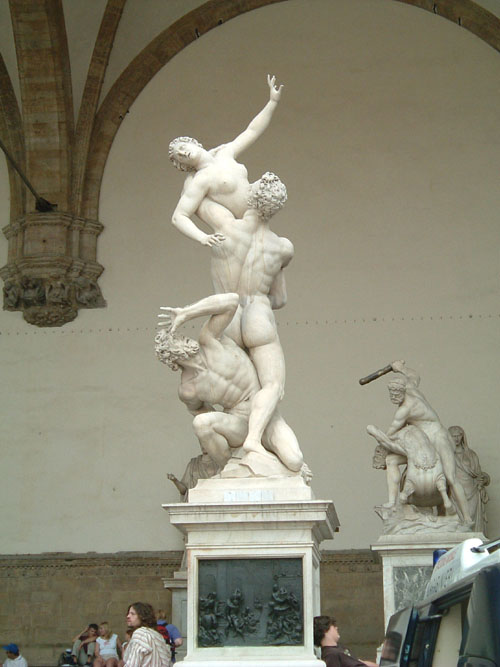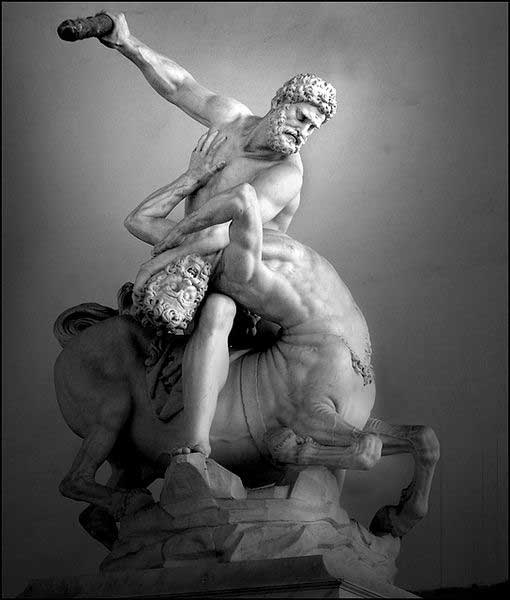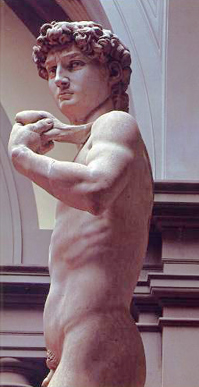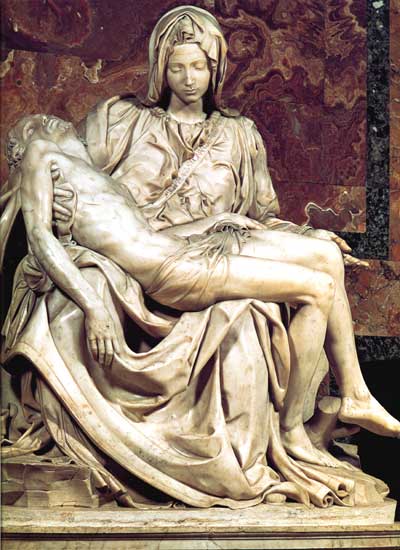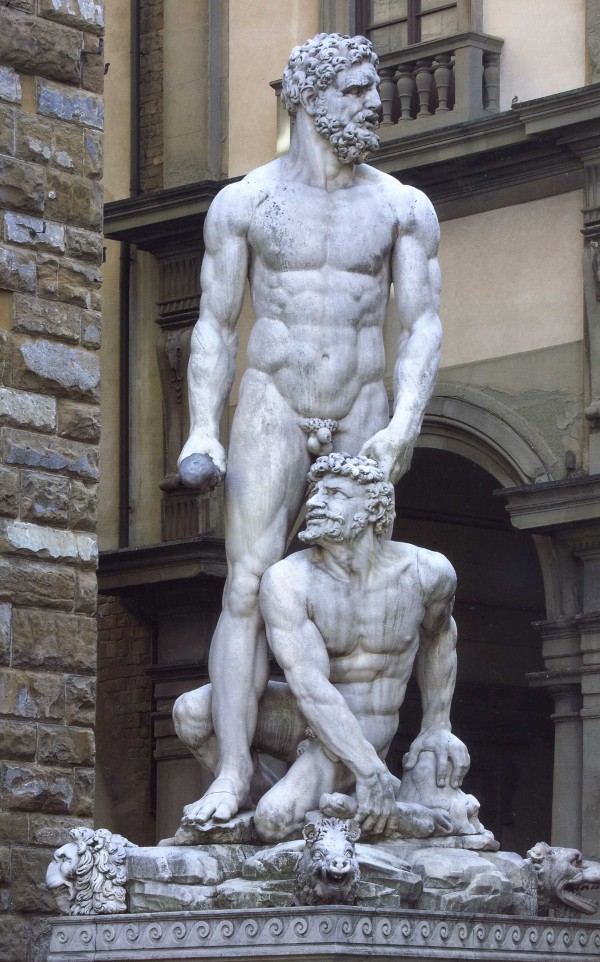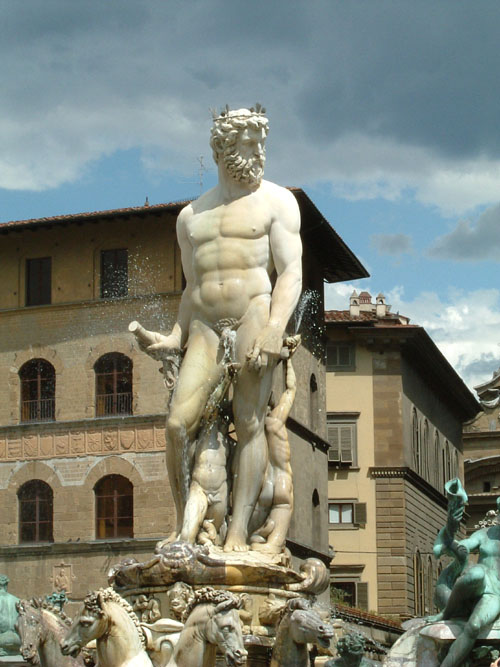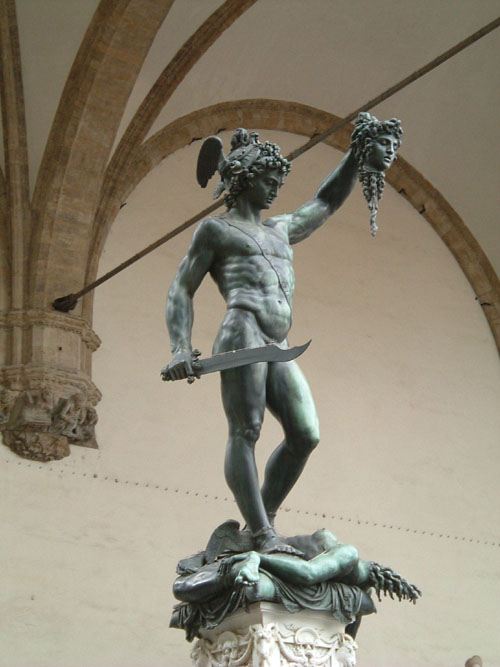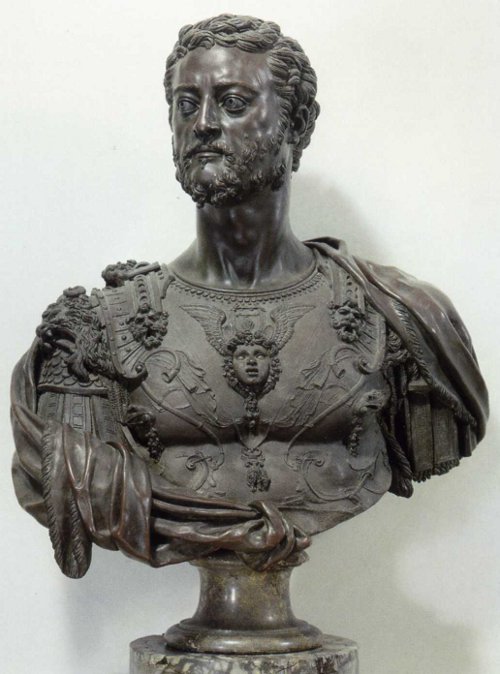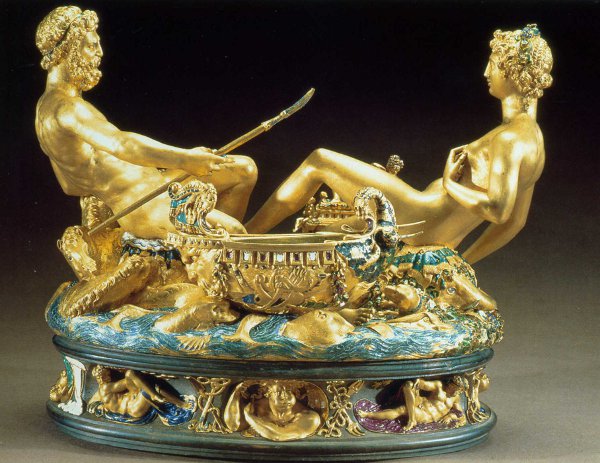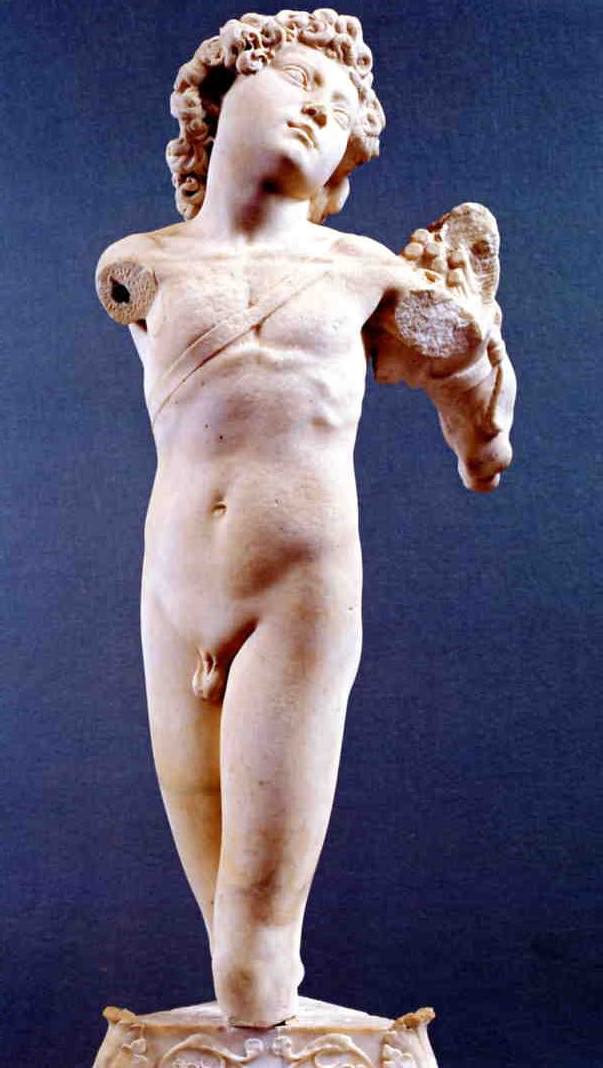Renaissance Sculpture.
Masterpieces in stone and metal.
Renaissance Sculpture is varied and very often executed on a grand scale. You can see (in person) some of the sculpture produced in the Renaissance and lots of it without having to pay an entrance fee to a museum or gallery.
There are several fine examples in Florence. (Michelangelo's David is one of these). St Peters in Rome has work by Bernini and Michelangelo, and the gilded bronze papal altar is a must see. The square in front of the Palazzo Vecchio in Florence is known as the Piazza della Signoria. This and the surrounding area are packed with several excellent works and, best of all, you do not pay an admission fee to view them. Some of the greatest early Renaissance Sculpture was created by the artists Donatello, Ghiberti, and Leonardo's master Verrocchio. Click on the link to view their work. Early Masterpieces
Giambologna. (Giovanni da Bologna)
Giovanni da Bologna became known simply as Giambologna (1529-1608). He was trained in Antwerp before moving to Rome to study the Ancients and the work of Michelangelo. He eventually settled in Florence and worked in the service of the Medici family he became one of the most important sculptors of the Late Renaissance.
Giambologna was born in Flanders, but he moved to Italy in 1550. He had a keen interest in the sculpture of classical antiquity and was influenced by the work of Michelangelo.
The story of the Sabine Women refers to an early period in Roman history. When the Sabines refused to allow their women to marry Romans they were abducted and persuaded to accept their fate. Giambologna has portrayed the scene with three vertical, intertwined figures. The work is his masterpiece.
Michelangelo Buonarroti.
Michelangelo Buonarroti was the greatest sculptor of the sixteenth century, and one of the greatest of all time.
Michelangelo’s statue of David is undoubtedly the most famous sculpture in existence. Carved out of marble from the quarry at Carrara it is one of the truly iconic Renaissance masterpieces. The original statue is now in the Accademia Gallery, Florence, Italy. However, a copy of this magnificent work has been placed on the Piazza della Signoria in the very centre of Florence. Anyone visiting the city can view this exact copy for free.
The Rome Pieta can be seen in St Peters, Rome. Carved sometime before Michelangelo’s statue of David it is no less a work of exceptional quality. The tenderness that the artist has managed to convey in the figures that form the overall composition is truly breath-taking. The sadness etched on the face of Christ’s mother is apparent as she gazes down at the lifeless body of her son.
These two incredible works of art are a testament to Michelangelo’s outstanding skill. He is the master of his medium and, Michelangelo is rightly regarded as one of the greatest artists of all time.
Michelangelo's renaissance sculptures. deserve their own page, click on the link to see his work. Michelangelo's Sculptures
Two more Renaissance statues from the Piazza della Signoria, Florence.
I managed to snap this image (Neptune Fountain) and the one bellow (Perseus) without any tourists getting in the way! A feat in itself in crowded Florence.
Ammannati is more famous for his architecture than any of his sculptures, but he did admire the work of Michelangelo. The Grand Duke of Tuscany, Cosimo I de' Medici was the model for the face of Neptune. Unfortunately, Michelangelo taunted Ammannati on the finished work stating that he had ruined a beautiful piece of marble!!!
(Sorry Michelangelo, this is a powerful sculpture, executed with skill and dedication by a fine artist.)
Renaissance Sculpture: - Benvenuto Cellini
Benvenuto Cellini was a sculptor and goldsmith. Born in Florence in 1500 his life was a mix of violence and supreme artistry which saw him imprisoned for looting and, by contrast, producing the famous golden saltcellar for Cardinal Ippolito d' Este. The saltcellar was acquired by King Francois I of France, it was stolen from the Kunsthistorisches Museum in 2003 but was recovered in January 2006.
This is a magnificent work! Cellini was influenced by Michelangelo's sculptures and this fine piece of art, cast in bronze, took ten years to complete.
- Home
- Later Renaissance Sculpture
